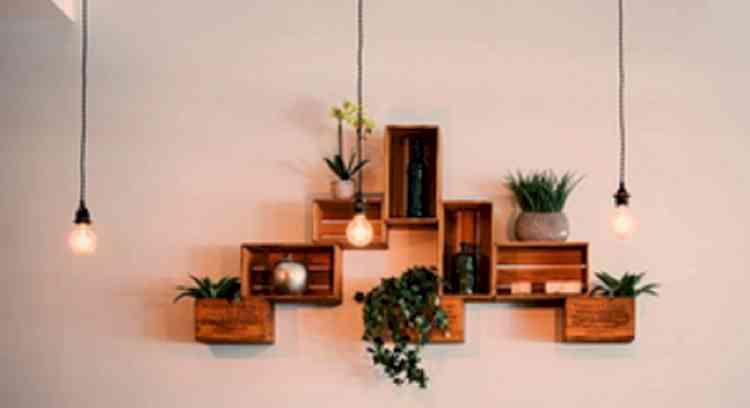The use of concrete in furniture and home deco
Concrete, a material long associated with heavy construction and industrial applications, has undergone a remarkable transformation, finding its way into the world of furniture and interior design. This evolution has revolutionized the way we perceive this versatile substance. While traditionally utilized for structural purposes in the construction of buildings and infrastructure, concrete's unique characteristics, including durability, strength, and moldability, have inspired designers and architects to explore its potential in creating innovative and aesthetically appealing furniture and interior products. This article will delve into the various aspects of concrete's integration into the world of design, exploring its history, manufacturing process, advantages, limitations, and diverse applications.

October 28, 2023 (IANSlife) Concrete, a material long associated with heavy construction and industrial applications, has undergone a remarkable transformation, finding its way into the world of furniture and interior design. This evolution has revolutionized the way we perceive this versatile substance. While traditionally utilized for structural purposes in the construction of buildings and infrastructure, concrete's unique characteristics, including durability, strength, and moldability, have inspired designers and architects to explore its potential in creating innovative and aesthetically appealing furniture and interior products. This article will delve into the various aspects of concrete's integration into the world of design, exploring its history, manufacturing process, advantages, limitations, and diverse applications.
A Brief History of Concrete in Design
Concrete boasts a rich historical legacy that stretches back to ancient civilizations. The Romans, renowned for their architectural prowess, were pioneers in using concrete to construct awe-inspiring structures like the Pantheon and aqueducts. In more recent history, the Industrial Revolution ushered in significant advancements in concrete technology, establishing it as a prominent building material. However, it was only in the 20th century that concrete began to be considered for artistic and design purposes. Visionaries like Le Corbusier and Frank Lloyd Wright embarked on experiments with concrete in their architectural projects, sparking interest in its potential for interior applications.
The Manufacturing Process
The manufacturing process of concrete furniture and interior products involves combining cement, water, aggregates, and sometimes additives to create a pliable mixture that can be molded into various shapes. Once poured into molds, the concrete is left to cure and harden, resulting in a sturdy and durable finished product. The use of different aggregates, like sand, gravel, or crushed stone, can profoundly influence the appearance and texture of the final piece.
Advantages of Concrete in Furniture and Interior Products
Limitations and Challenges
While concrete offers numerous advantages, it also comes with some limitations and challenges that designers need to consider:
Applications in Furniture and Interior Design
Concrete's adaptability has led to its integration into various furniture and interior products:
In conclusion, concrete's journey from being a construction material to an integral part of furniture and interior design showcases its adaptability and potential. Its history, manufacturing process, advantages, and applications in design underscore its versatility and enduring appeal. While it comes with certain challenges, the unique aesthetic and functional advantages it offers make concrete a compelling choice for those looking to create distinctive and durable interior spaces. As design trends continue to evolve, concrete remains a material that adds a touch of industrial sophistication and modern elegance to our homes and commercial spaces.
(Suhani Lal Sanghra, Founder, Sparc Design)
(This article is website exclusive and cannot be reproduced without the permission of IANSlife)
IANSlife can be contacted at [email protected]


 IANS
IANS 







